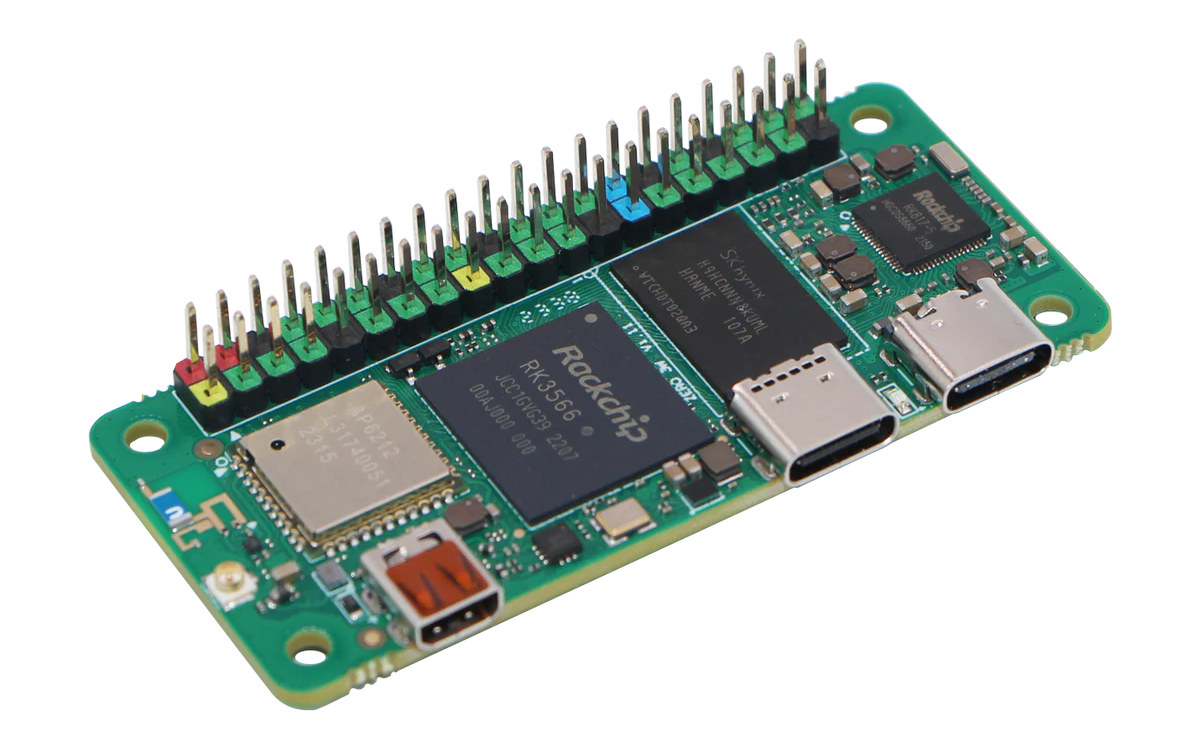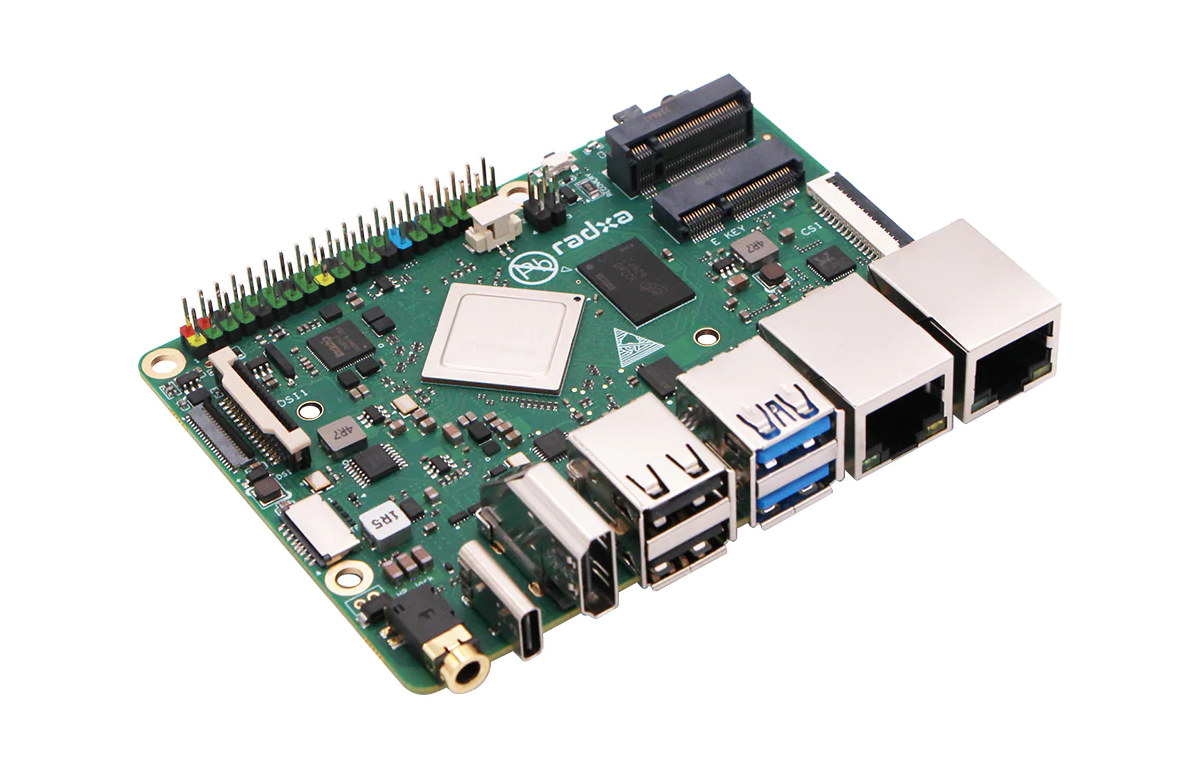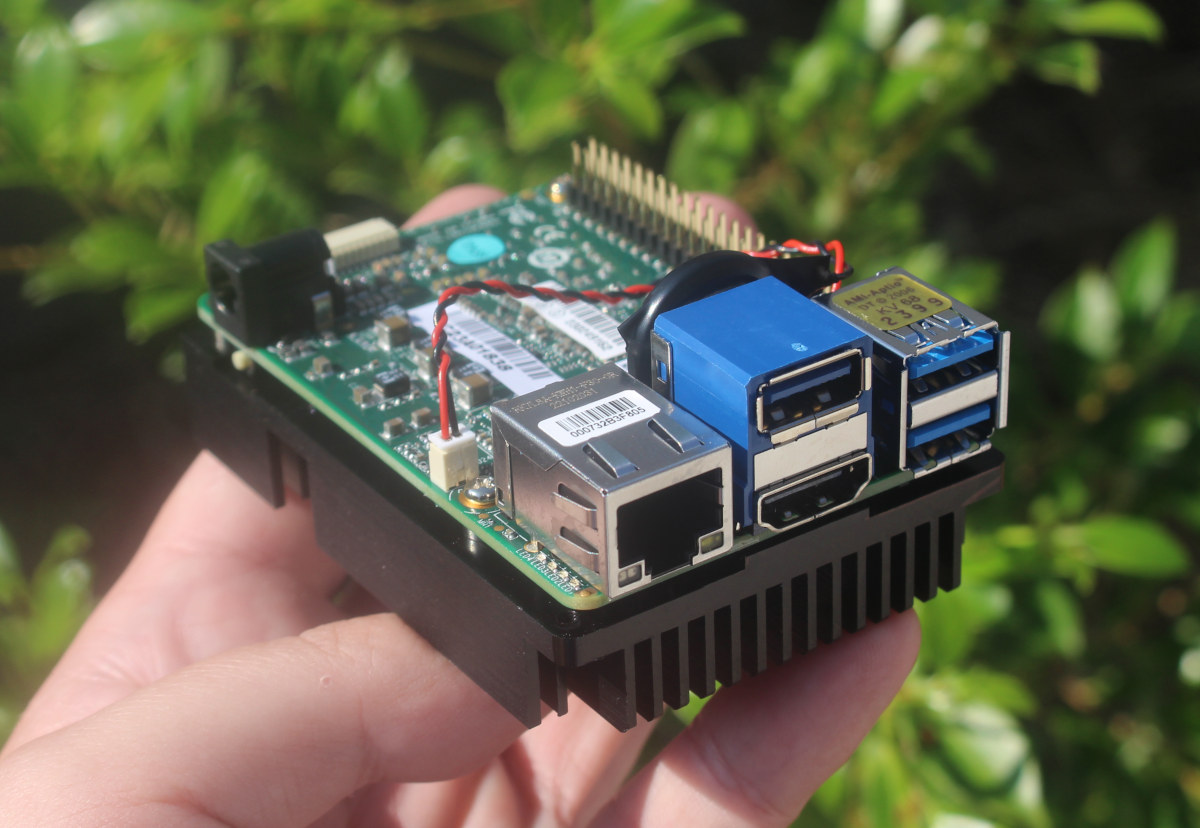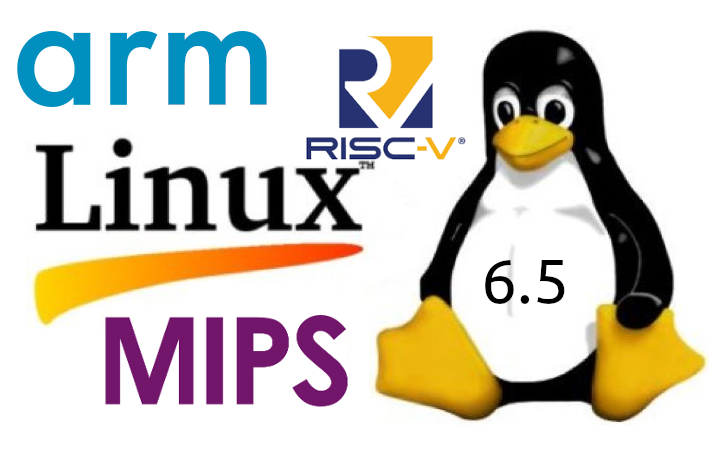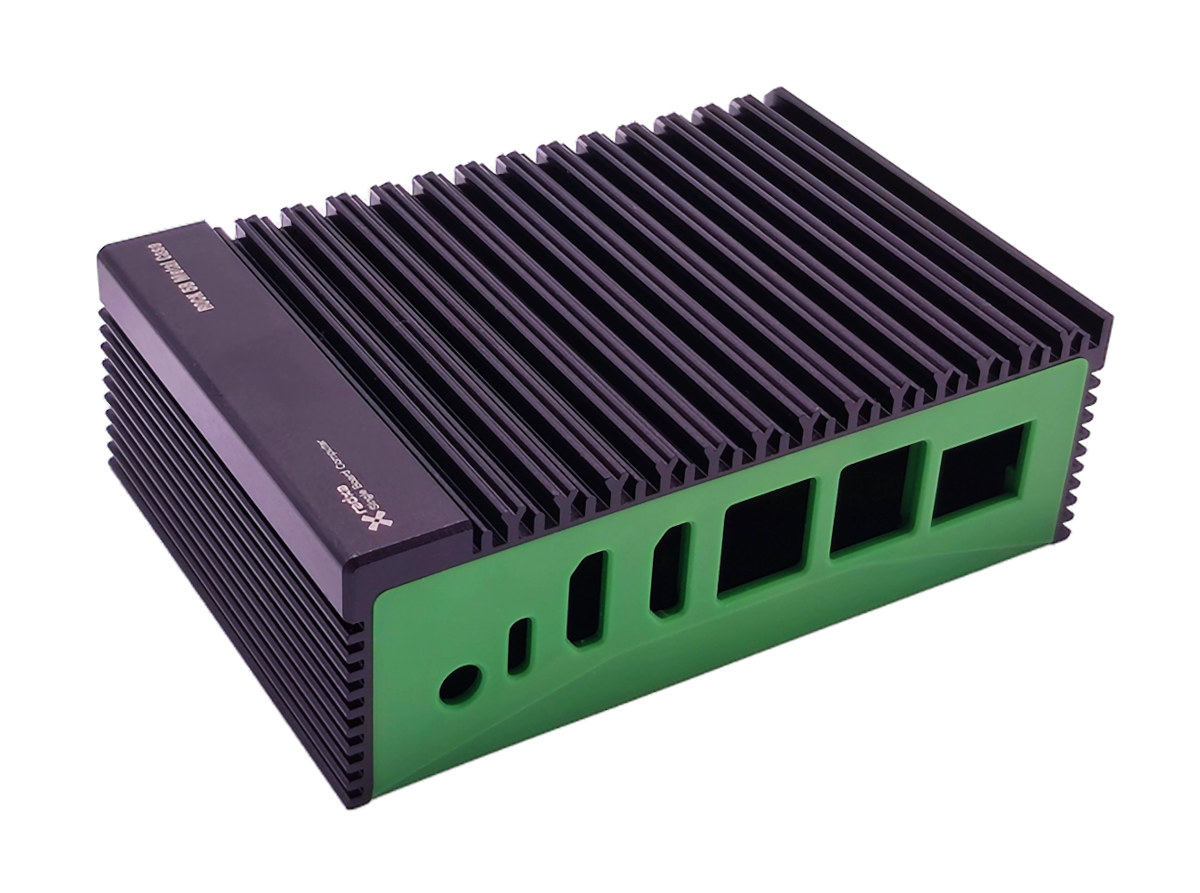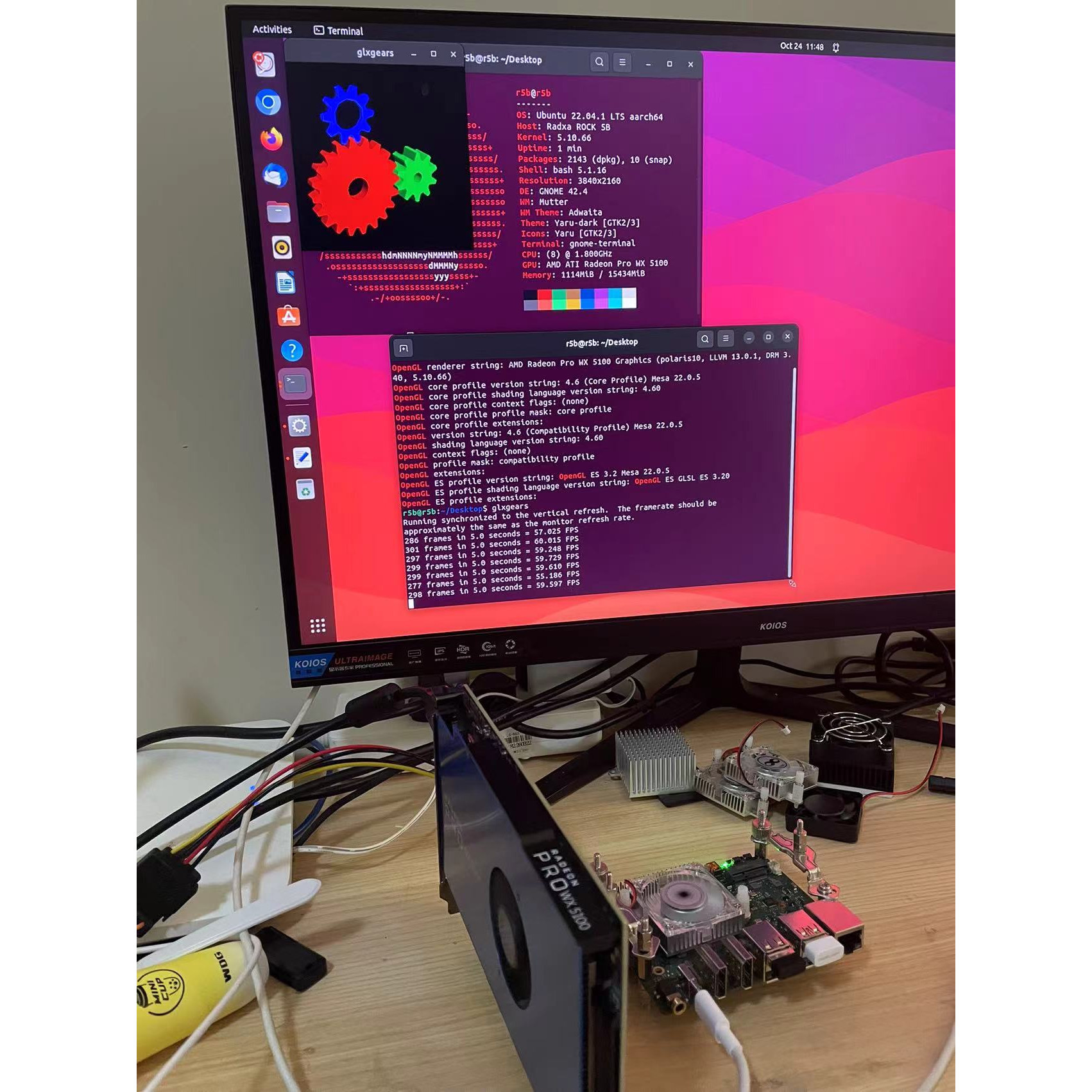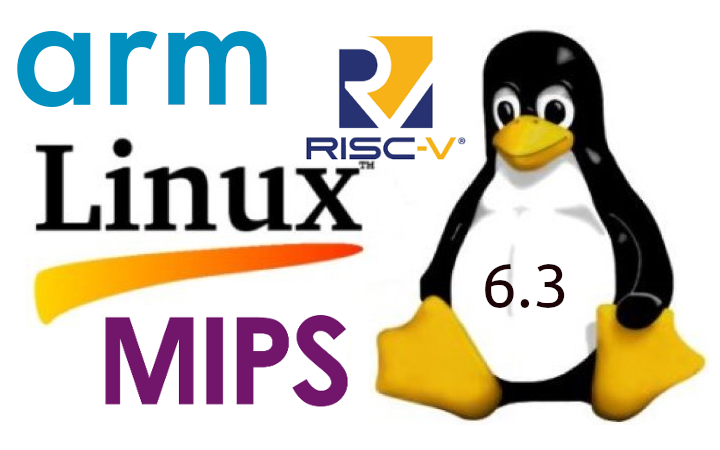More Raspberry Pi Zero 2 W lookalikes are coming to market, as after the Allwinner H618-based Orange Pi Zero 2W, the Radxa Zero 3W has now been introduced with a 1.6 GHz Rockchip RK3566 processor and up to 8GB RAM, plus WiFi 6 and Bluetooth 5.4 connectivity, which makes it one of the most powerful Arm Linux SBCs in the compact Raspberry Pi Zero form factor. The board also comes with an optional eMMC flash with up to 64GB capacity, a microSD card, a micro HDMI port, two USB Type-C ports, a MIPI CSI camera connector, and of course, the usual 40-pin Raspberry Pi GPIO header. Radxa Zero 3W specifications: SoC – Rockchip RK3566 CPU – Quad-core Arm Cortex-A55 processor @ 1.6 GHz (Note the RK3566 is usually clocked at up to 1.8 GHz but may have been underclocked here due to heat issues at the higher frequency as the […]
Radxa ROCK 3B Rockchip RK3568 SBC combines Pico-ITX and Raspberry Pi form factors
Radxa ROCK 3 Model B, or ROCK 3B for shorts, is a “PI-CO ITX” SBC powered by a Rockchip RK3568 SoC that combines the benefits of Pico-ITX and Raspberry Pi form factors in the sense that the 100x72mm board features all main ports on the rear side and supports expansion through a 40-pin Raspberry Pi-compatible GPIO header and several M.2 sockets for storage and wireless modules. The ROCK 3B is the younger, but bigger brother of the ROCK 3A business card-sized SBC introduced in 2021, still with an RK3568 CPU and up to 8GB LPDDR4, but the board features two gigabit Ethernet ports, an M.2 B Key socket for 4G LTE/5G cellular modules, an M.2 PCIe 3.0 x1 socket for an M.2 2280 SSD not necessitating an expansion board, besides the M.2 Key-E socket for WiFi 6. ROCK 3B specifications: SoC – Rockchip RK3568(J) CPU – Quad-core Cortex A55 processor […]
UP 7000 Intel Processor N100 fanless SBC review – Part 1: Unboxing and first boot
AAEON has sent us an UP 7000 single board computer equipped with an Intel Processor N100 Alder Lake-N CPU, 8GB RAM, and 64GB eMMC flash for review. The business card-sized SBC is an update to the UP 4000 SBC that we reviewed last year with an Intel Atom x7-E3950 Apollo Lake processor, 4GB RAM, 64GB eMMC flash, and should also provide an x86 alternative to the Raspberry Pi 5 for industrial application. We’ve already written about the UP 7000 specifications with N100, N97, or N50 processor in an earlier article, so in the first part of the review, we’ll check out the hardware, compare its design to other small form factor, yet relatively powerful, single board computers, and install Ubuntu 22.04, before testing the Linux OS on the board in more details in the second part of the review. UP 7000 Unboxing We received a package with two boxes, one […]
International Black Friday and Cyber Monday 2023 deals and coupon codes
We’ve been writing about international Black Friday and Cyber Monday deals and coupon codes since 2014, as US-centric promotions such as Amazon’s Black Friday and Cyber Monday deals are not always available to the international audience of CNX Software. So once again, we’ve searched at Black Friday and Cyber Monday 2023 international promotions and discount codes from specific manufacturers as well as popular online stores such as Aliexpress, Banggood, and others. Aliexpress Black Friday and Cyber Monday event Aliexpress will have a Black Friday (and Cyber Monday) event in 2023, but we have limited details at this time since it will only start on November 23, contrary to some of the other deals we’ll feature below which are already up and running. But the event will have two periods: Nov 20-22 PT – Warm Up event where users can find and add items to the cart before purchasing during the […]
Linux 6.5 release – Notable changes, Arm, RISC-V and MIPS architectures
Linus Torvalds has just announced the release of Linux 6.5 on the Linux Kernel Mailing List (LKML): So nothing particularly odd or scary happened this last week, so there is no excuse to delay the 6.5 release. I still have this nagging feeling that a lot of people are on vacation and that things have been quiet partly due to that. But this release has been going smoothly, so that’s probably just me being paranoid. The biggest patches this last week were literally just to our selftests. The shortlog below is obviously not the 6.5 release log, it’s purely just the last week since rc7. Anyway, this obviously means that the merge window for 6.6 starts tomorrow. I already have ~20 pull requests pending and ready to go, but before we start the next merge frenzy, please give this final release one last round of testing, ok? Linus The earlier […]
Radxa ROCK 5B SBC goes fanless with metal case
The Radxa ROCK 5B was one of the first Rockchip RK3588 SBCs, and when we reviewed the developer edition of the board in July 2022 it came with an heatsink and 5V fan that was always on. That’s probably fine for testing, but many people will prefer a fanless solution. It turns out a metal case turning the ROCK 5B SBC into a fanless device has been available since the end of last year, but I’ve only come across it today. The black part is made of metal and the front and back plates are made of green plastic. As with all cases, there are always questions about compatibility with accessories, and for metal cases in particular, whether it’s actually used to cool the processor. Since it’s been around for many months, other users have already tested it out including Radxa forum’s user Deadmeat user who confirmed the SSD and […]
AMD Radeon PCIe graphics card tested with a Rockchip RK3588 SBC (Radxa Rock 5B)
When Rockchip first introduced the Rockchip RK3399 processor with a PCIe interface people initially hoped they could connect graphics card, but those hopes were quickly squashed due to a 32MB addressing limit. However, the PCIe implementation on the newer Rockchip RK3588 processor does not have such a limitation, and last November, Radxa teased a demo with an AMD Radeon Pro WX 5100 PCIe graphics card connected to the Rock 5B SBC running the glxgears demo on the Radeon GPU. I couldn’t find any instructions to reproduce this setup, but this got Jasbir interested, and he tried to do a test of his own with the Radxa Rock 5B connected to an AMD Radeon R7 520 (XFX R7 250 low-profile) through an “M.2 Key M Extender Cable to PCIE x16 Graphics Card Riser Adapter” ($14 plus taxes on Aliexpress) and powered by an LR1007 120W 12VDC ATX board. The experiment was […]
Linux 6.3 release – Notable changes, Arm, RISC-V and MIPS architectures
Linux Torvalds has just announced the release of Linux 6.3 on the Linux Kernel Mailing List (LKML): It’s been a calm release this time around, and the last week was really no different. So here we are, right on schedule, with the 6.3 release out and ready for your enjoyment. That doesn’t mean that something nasty couldn’t have been lurking all these weeks, of course, but let’s just take things at face value and hope it all means that everything is fine, and it really was a nice controlled release cycle. It happens. This also obviously means the merge window for 6.4 will open tomorrow. I already have two dozen pull requests waiting for me to start doing my pulls, and I appreciate it. I expect I’ll have even more when I wake up tomorrow. But in the meantime, let’s enjoy (and test) the 6.3 release. As always, the shortlog […]


